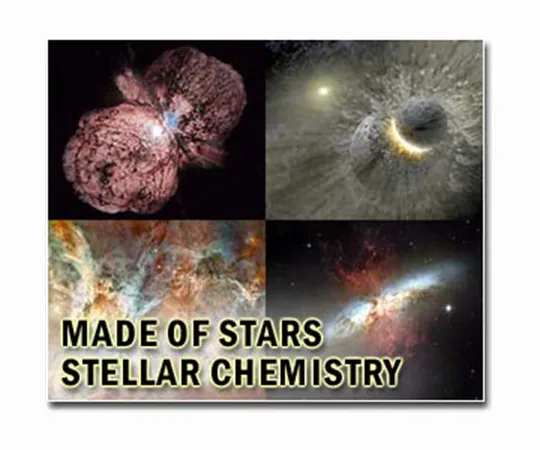
Unlocking Cosmic Mysteries: Pulsar Mapping Reveals Hidden Plasma Structures Near Earth
2025-04-23
Author: John Tan
Astounding Discovery Amidst Cosmic Drama
In a groundbreaking development, Australian scientists have tapped into the elusive behavior of a nearby pulsar to unveil concealed plasma structures lurking in our galactic neighborhood. This extraordinary feat, accomplished with the state-of-the-art MeerKAT radio telescope, promises to revolutionize our understanding of the chaotic medium that exists between the stars.
The Power of Pulsars: Nature’s Cosmic Beacons
Pulsars, the remnants of once-mighty stars, emit rhythmic bursts of radio waves that can shimmer as they journey through the turbulent interstellar plasma. Leading the research, Dr. Daniel Reardon from the ARC Centre of Excellence for Gravitational Wave Discovery, along with his team at Swinburne University of Technology, dedicated six intense days to analyze signals from the closest known millisecond pulsar, J0437-4715.
This scintillation—the twinkling effect seen in these pulsar signals—occurs when radio emissions penetrate the disordered plasma shaped by cosmic phenomena, notably explosive stellar events. Dr. Reardon likened the results to an interstellar CT scan, providing a detailed map of ionized gas clouds that fill our galactic surroundings.
Revealing the Unexpected: Plasma Blobs in the Local Bubble
In a surprising twist, the research team discovered numerous compact plasma blobs, each comparable in size to our solar system, nestled within the previously thought smooth confines of the Local Bubble, a low-density region surrounding our Sun. This challenges earlier notions that our cosmic neighborhood was a tranquil and uniform space.
Peering Into a Pulsar’s Bow Shock: A Revolutionary Insight
Notably, this study marked the first time scientists were able to use scintillation to peer inside a pulsar’s bow shock. As J0437-4715 speeds through the interstellar medium at an astonishing tenfold the speed of sound, it creates a shockwave akin to the bow wave of a ship cutting through water. The research identified multiple sheets of plasma within this shockwave, including an intriguing stream flowing toward the front, contradicting initial expectations.
A New Lens on the Cosmos
Published in the prestigious journal Nature Astronomy, this pioneering research not only crafts the most detailed plasma map of the Local Bubble ever produced but also introduces a revolutionary method for studying pulsar environments and bow shocks. "We can learn a lot from a twinkling pulsar!" Dr. Reardon enthusiastically asserts, hinting at a wealth of knowledge yet to be uncovered in the vast universe.

 Brasil (PT)
Brasil (PT)
 Canada (EN)
Canada (EN)
 Chile (ES)
Chile (ES)
 Česko (CS)
Česko (CS)
 대한민국 (KO)
대한민국 (KO)
 España (ES)
España (ES)
 France (FR)
France (FR)
 Hong Kong (EN)
Hong Kong (EN)
 Italia (IT)
Italia (IT)
 日本 (JA)
日本 (JA)
 Magyarország (HU)
Magyarország (HU)
 Norge (NO)
Norge (NO)
 Polska (PL)
Polska (PL)
 Schweiz (DE)
Schweiz (DE)
 Singapore (EN)
Singapore (EN)
 Sverige (SV)
Sverige (SV)
 Suomi (FI)
Suomi (FI)
 Türkiye (TR)
Türkiye (TR)
 الإمارات العربية المتحدة (AR)
الإمارات العربية المتحدة (AR)